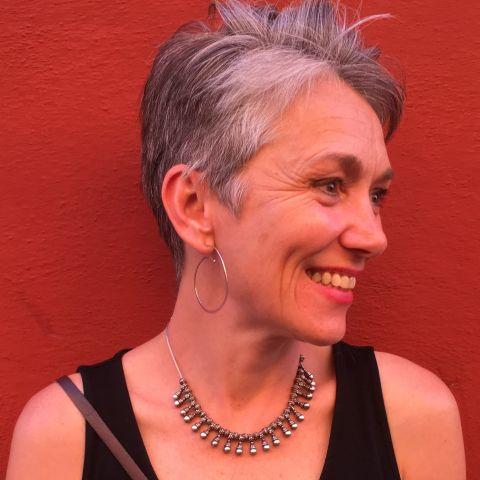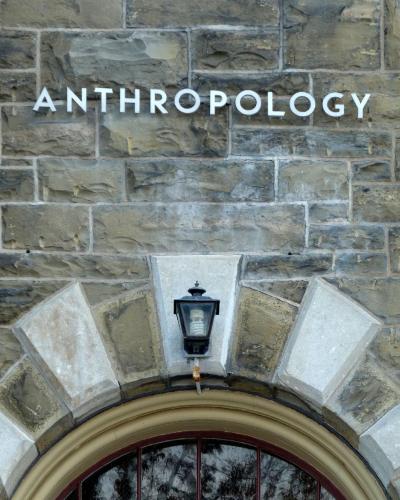Looking for a new book to read? Check out these books by faculty members from the Department of Anthropology.
Monuments and Memory: Archaeological Perspectives on Commemoration
Published in January 2025; available at University Press of Florida.
Co-edited by John H. Jameson, Sherene Baugher, and Richard Veit.
Sherene Baugher is professor emeritus of anthropology and landscape architecture at Cornell University.
This volume examines many different public monuments to increase understanding of the cultural factors that have shaped their creation, maintenance, and—in some cases—removal. The role of monuments in communities and society continues to be an important and controversial topic, and the case studies in this volume contribute to this conversation by assessing the ways such markers can be empowering or marginalizing from a wide range of perspectives.
The monuments discussed here represent historical events from the Revolutionary War through the Korean War, including the “slave auction block” formerly located on the streets of Fredericksburg, Virginia; memorials to Confederate soldiers across the South and in northern POW cemeteries; and the Pullman National Monument in Chicago for workers who participated in the 1894 Pullman strike. This volume also highlights the dearth of statues memorializing the achievements of women and minorities, especially women of color, and contributors discuss whether recent movements advocating for more inclusive histories will lead to an increase in monuments honoring people whose narratives have been suppressed.
Looking at the powerful role of monuments in conveying the memory of history to future generations, the contributors to Monuments and Memory show why it is important to address the messages of these sites and ask whose histories they may be silencing. This book demonstrates how conversations surrounding preservation and interpretation of monuments encourage community involvement.
Futures after Progress: Hope and Doubt in Late Industrial Baltimore
Published in May 2024; available at the University of Chicago Press.
By Chloe Ahmann
Chloe Ahmann is assistant professor of anthropology at Cornell University. This is her first book.
A powerful ethnographic study of South Baltimore, a place haunted by toxic pasts in its pursuit of better futures.
Factory fires, chemical explosions, and aerial pollutants have inexorably shaped South Baltimore into one of the most polluted places in the country. In Futures after Progress, anthropologist Chloe Ahmann explores the rise and fall of industrial lifeways on this edge of the city and the uncertainties that linger in their wake. Writing from the community of Curtis Bay, where two hundred years of technocratic hubris have carried lethal costs, Ahmann also follows local efforts to realize a good future after industry and the rifts competing visions opened between neighbors.
Examining tensions between White and Black residents, environmental activists and industrial enthusiasts, local elders and younger generations, Ahmann shows how this community has become a battleground for competing political futures whose stakes reverberate beyond its six square miles in a present after progress has lost steam. And yet—as one young resident explains—“that’s not how the story ends.” Rigorous and moving, Futures after Progress probes the deep roots of our ecological predicament, offering insight into what lies ahead for a country beset by dreams deferred and a planet on the precipice of change.
Coming in July 2025:
The Mountain Embodied: Head Shaping and Personhood in the Ancient Andes
Sales Date: July 15, 2025. Available at University of Texas Press.
By Matthew Velasco
Matthew C. Velasco is an assistant professor of anthropology and codirector of the Human and Animal Bone Laboratory at Cornell University.
A study of the ancient practice of Andean head shaping and its cultural connotations.
In the late sixteenth century, Spanish conquerors in Peru’s Colca Valley encountered the Collaguas and Cavanas, Indigenous people who undertook a striking form of body modification: Collaguas bound the heads of infants and children so that their skulls grew narrow and elongated, and Cavanas so that their skulls became wide and squat. Head shaping resulted in craniums that resembled two specific mountains associated with the groups. For Europeans, shaped skulls immediately and durably became a marker of territorialized ethnic difference.
The Mountain Embodied offers a more nuanced story. Having studied hundreds of samples of human remains, bioarchaeologist Matthew Velasco argues that reducing head shape to a mere ethnic marker is a colonial invention. Instead, the social significance of head shaping was protean and intersected with other structures of difference, such as gender, kinship, and status, influencing experience within the community. Head shaping, then, was one factor in the construction of a locally embedded kind of subjectivity. An outsider could deduce group identity from head shape, but for practitioners, head shaping reflected something else: nothing less than personhood itself.
More titles are available at our recent faculty books page and a full list can be found at our complete archive of faculty books page.





